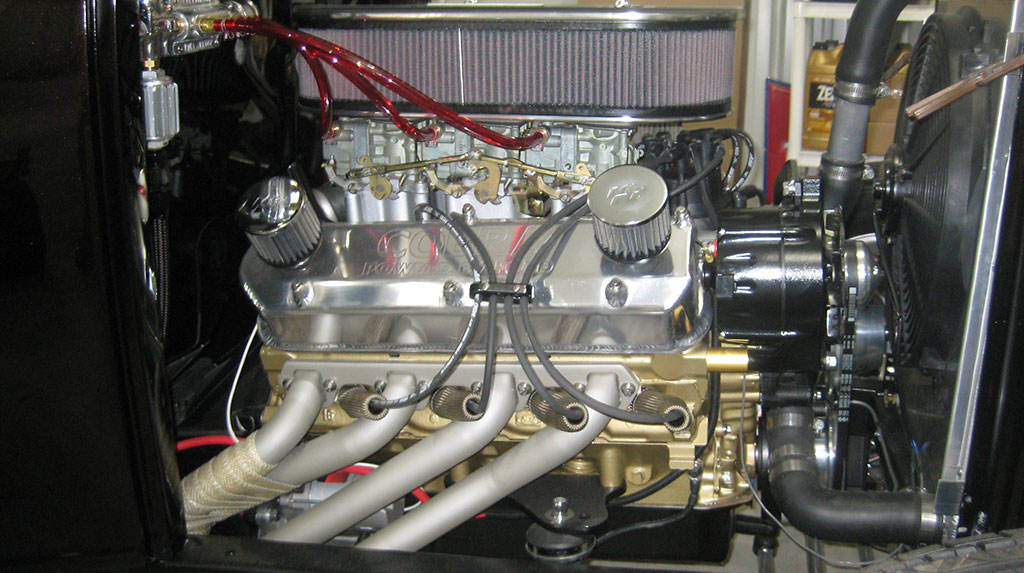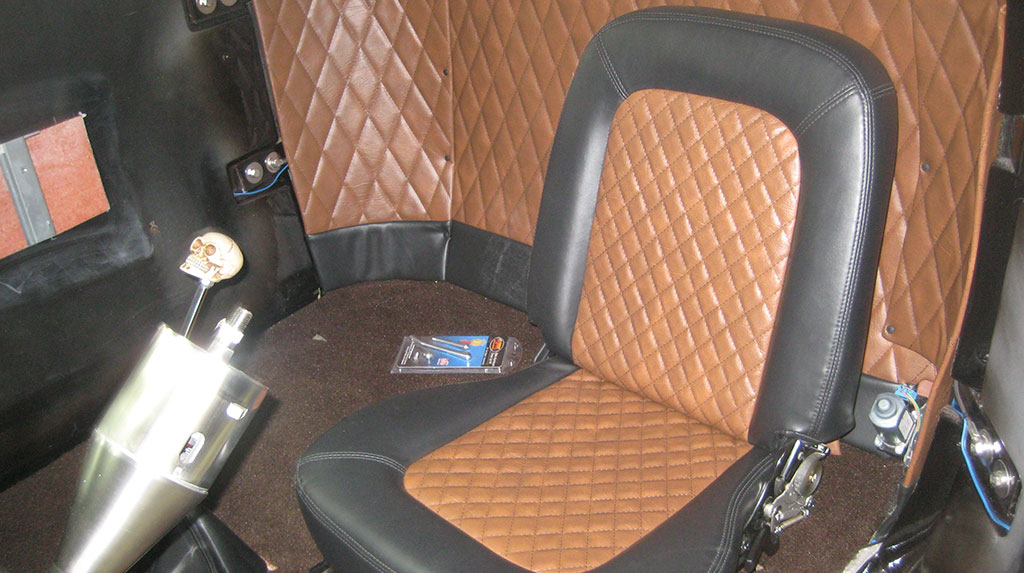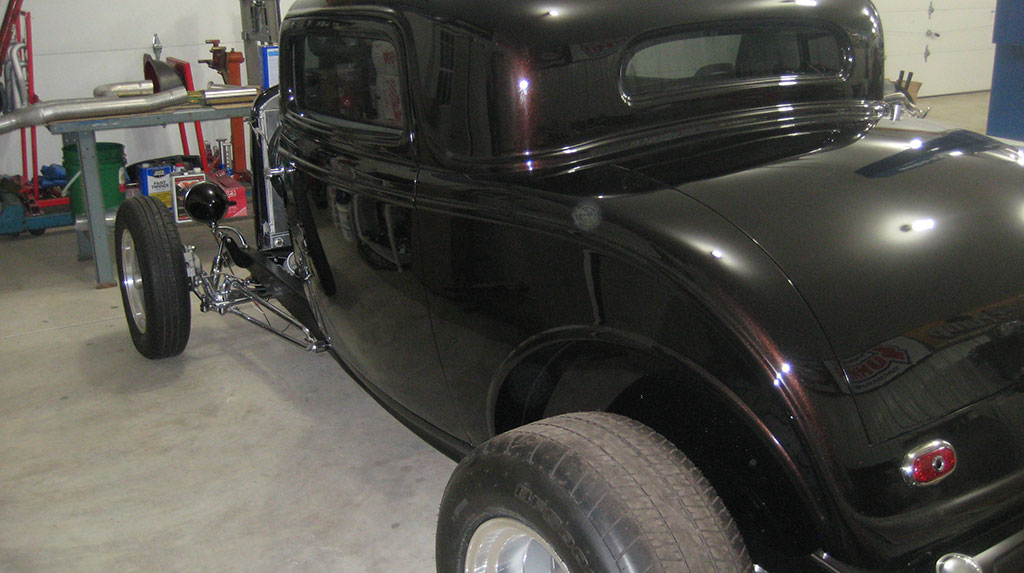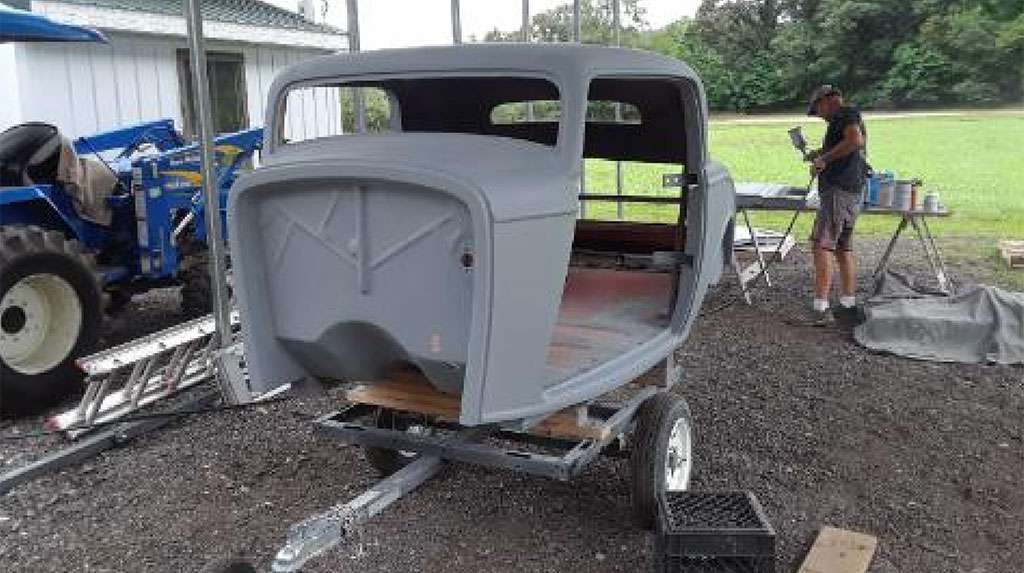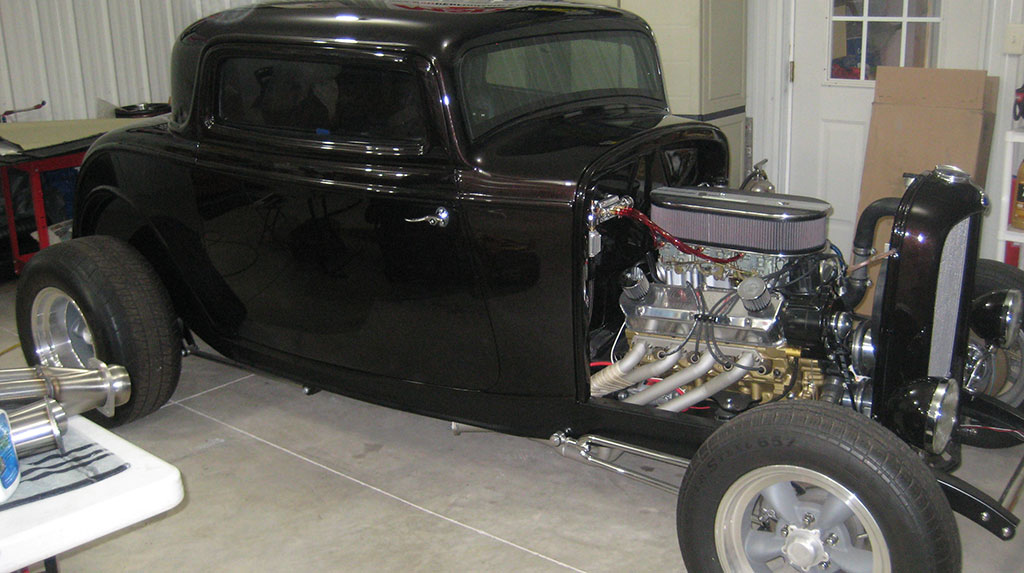“No bells, no whistles. Just a hot rod.”—Chris Nolff
In this edition of Build-in-Progress, TREMEC is shining the spotlight on Chris Nolff of Michigan and his 1932 Ford highboy classic, outfitted with a TREMEC TKO 600 transmission. The vintage-style Blue Oval is not his first adventure in old iron, having owned other 1932s, as well as a 1937 and 1940. In fact, parked in the home shop next to this project is a 1966 Ford Mustang that he has been renovating simultaneously to be a Pro Street dragstrip car.
Noticing a Ford theme? That’s Chris’s backstory. He was a mechanic at a couple dealerships, including Bob Ford in Dearborn, Michigan, and at an automotive company that focused on building one-offs and prototypes. He then moved to Ford Motor Company, building experimental and show-car prototypes. He retired from there as an engineering technologist (a fancy way of saying “mechanic,” as Chris explains it).
“When I retired from Ford in 2010, I picked up the ’32. I now had a lot of time and I just couldn’t stop doing this type of work. I’m a gearhead that won’t quit,” said Chris. He loves designing, fabricating and assembling, and typically spends every day working on his projects. The highboy had been a work-in-progress for seven years, mainly due to spreading out the cost of this build over time.
Chris previously built an award-winning 1925 Ford called “Coyote.” The goal for this car is to debut it formally at the 2021 Detroit AutoRama. After that, this unique car will function as daily driver, show car, and cruiser. “It’s made to drive, ride, steer and stop. It’s like a brand-new car.”
Scenes from a 1932 Ford Highboy Build in Progress:
Chris found this Ford on RacingJunk.com. “The ’32s have always been a favorite, like for a lot of people. I’ve seen many ’32s built. This car was just my definition of the way I would build a ’32 highboy.”
How he decided on the buildup and modifications: “Went to bed thinking. Woke up thinking. Sometimes it took days for a decision.”
“Bones” is the car’s nickname. “I wanted to call it ‘Bones’ because it’s a bare-bones hot rod. When I build, I like to do things old school.” It represents a classic car built back in 1932. “All the parts I’ve used come from the 1930s or 1960s. It doesn’t have late-model dual overhead cam, air conditioning or a stereo.”
”When you see a fenderless car, the frame is usually painted the same color as the car. I was able to make the frame and body two different colors.” In this case, black and Kodiak Brown Metallic, inspired by his wife’s 2013 Ford Edge. “After her car is waxed and in the sun, it changes colors and grabs your attention. I’d never seen a ’32 in this color before.”
Chris Nolff’s 1,800lb 1932 Ford highboy is all about the meticulous details – which have required a lot of patience. He did the design and fabrication in his home shop, except for the paint job, since it required a paint booth. “I did 90 percent of the work. When building a one-of-a-kind car, it needs to be built by one person.”
